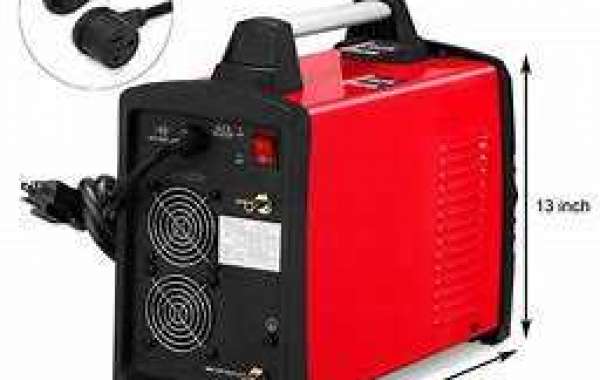Plasma cutting technology has become a cornerstone in modern manufacturing, offering precision and efficiency in material processing. This article aims to dissect the distinctions between two prominent players in the plasma cutting arena – the High Frequency Plasma Cutting Machine and the Non-High Frequency Plasma Cutting Machine. Through an exploration of their key features, advantages, and varied applications, we aim to provide insights into the great usage of each technology in different industrial domains.
High Frequency Plasma Cutting Machine:
1. Advanced High-Frequency Technology:
High Frequency Plasma Cutting Machines leverage advanced high-frequency technology to generate plasma arcs for efficient cutting. This technology excels in providing precise and stable cutting results, making it well-suited for industries with stringent requirements for cutting quality.
2. High-Energy Arc:
The high-energy arc in High Frequency Plasma Cutting Machines allows for easy penetration of various thicknesses and types of metal materials. This high-energy capability enhances cutting speed and efficiency, making it an ideal choice for projects of considerable scale.
3. High-Frequency Arc Starting:
Utilizing high-frequency arc starting technology, these machines initiate cutting arcs without physical contact with the workpiece, preventing contamination. This is particularly crucial in industries with high cleanliness standards, such as food processing and precision instrument manufacturing.
4. Higher Precision:
High Frequency Plasma Cutting Machines exhibit higher precision during cutting, enabling intricate and detailed cutting. This precision is valuable in fields demanding high accuracy, such as aerospace and automotive manufacturing.
5. Widespread Application in Specialized Fields:
Due to its highly precise cutting capabilities, High Frequency Plasma Cutting Machines find extensive use in specialized industries such as aviation, medical device manufacturing, and the electronics sector. In these fields, where demands for cutting quality and accuracy are paramount, high-frequency plasma cutting is indispensable.
Non-High Frequency Plasma Cutting Machine:
1. Stable and Economical Choice:
Non-High Frequency Plasma Cutting Machines are renowned for their stable and economical performance. These machines typically use direct current power sources to generate plasma arcs, providing excellent stability and making them suitable for cost-sensitive applications.
2. Wide Adaptability:
Due to their stable cutting performance, Non-High Frequency Plasma Cutting Machines excel in processing various metal materials. This broad adaptability makes them an ideal choice for handling different types of engineering projects, especially those requiring material flexibility.
3. Relatively Lower Power Requirements:
In comparison to High Frequency Plasma Cutting Machines, non-high frequency counterparts have relatively lower power requirements. This advantage makes them more suitable for on-site applications where power supply may be limited.
4. Applicable to General Cutting Tasks:
Non-High Frequency Plasma Cutting Machines serve as versatile cutting devices suitable for general metal cutting tasks. For applications that do not necessitate badly high precision, these machines provide a more cost-effective solution.
5. Widespread Use in Construction and Manufacturing:
Thanks to their good adaptability and cost-effectiveness, Non-High Frequency Plasma Cutting Machines find widespread use in construction and manufacturing industries. This includes cutting structural components, manufacturing metal products, and other scenarios where an efficient cutting solution is required.
Performance Comparison and Application Selection:
1. Cutting Speed:
High Frequency Plasma Cutting Machines typically boast faster cutting speeds, making them suitable for scenarios requiring efficient completion of cutting tasks. Non-High Frequency Plasma Cutting Machines maintain stable performance for general cutting tasks where speed requirements are relatively lower.
2. Precision and Specialization:
High Frequency Plasma Cutting Machines shine in industries demanding high precision and specialized cutting applications. Their ability to achieve intricate cuts is invaluable in sectors such as aerospace and medical manufacturing. Non-High Frequency Plasma Cutting Machines, while less specialized, offer stable performance for general applications.
3. Adaptability and Cost:
Non-High Frequency Plasma Cutting Machines exhibit wider adaptability to different materials and come with lower initial costs. In contrast, High Frequency Plasma Cutting Machines, while more specialized, may involve higher initial investments but provide unparalleled precision in specific applications.
4. Power Supply Considerations:
Non-High Frequency Plasma Cutting Machines are advantageous in scenarios with limited power supply, as they have lower power requirements. High Frequency Plasma Cutting Machines, requiring more power, are better suited for environments with robust power infrastructure.
5. Industry-Specific Applications:
High Frequency Plasma Cutting Machines find their niche in industries demanding the precision, such as electronics and medical devices. Non-High Frequency Plasma Cutting Machines, with their versatility, cater to a broader range of applications, including construction, metal fabrication, and general manufacturing.
In conclusion, the choice between High Frequency and Non-High Frequency Plasma Cutting Machines depends on the specific needs of the application. High Frequency machines excel in specialized industries where precision is paramount, while Non-High Frequency machines offer stability and adaptability for a broader range of general applications. Understanding the important features of each technology is crucial for selecting the great cutting solution that aligns with the requirements of diverse industrial domains.










